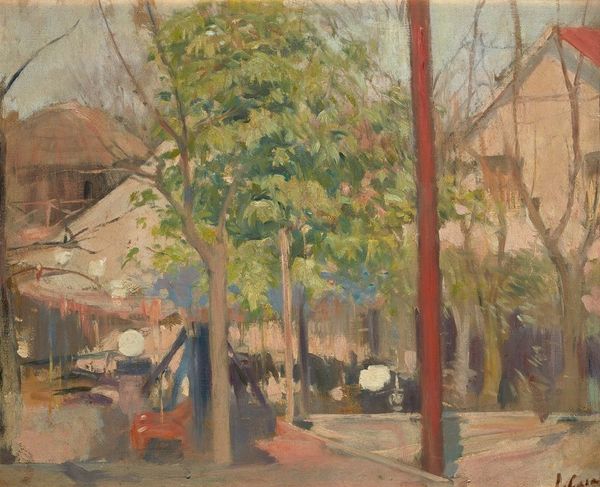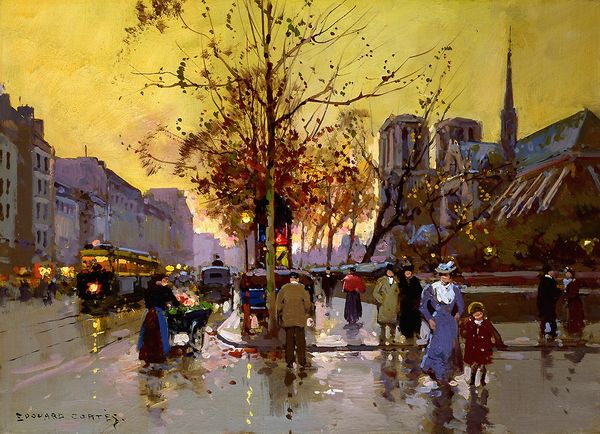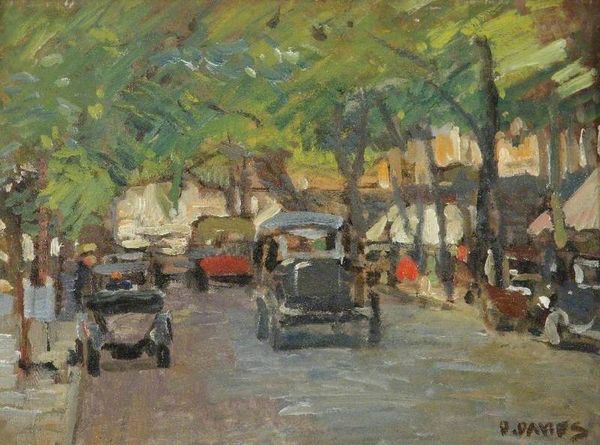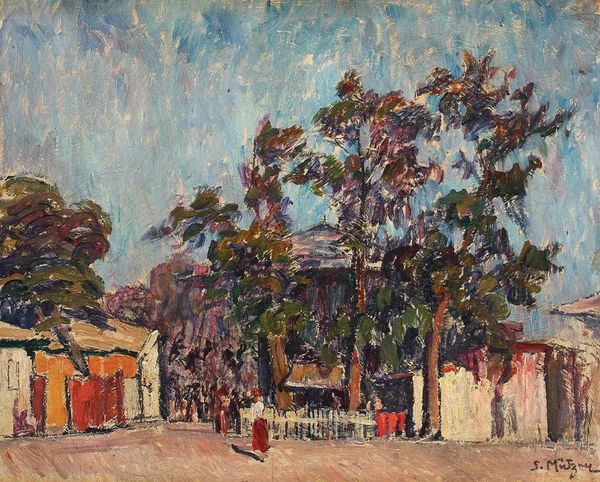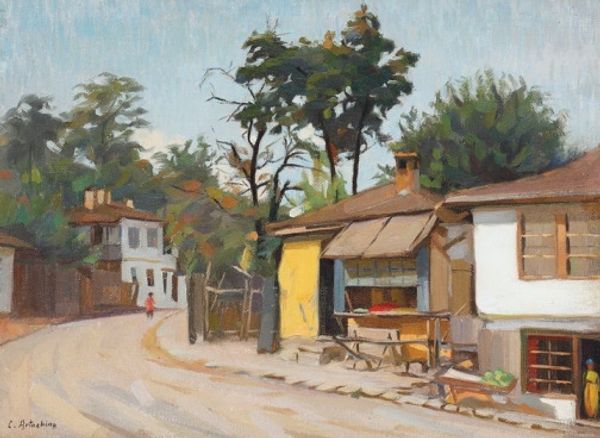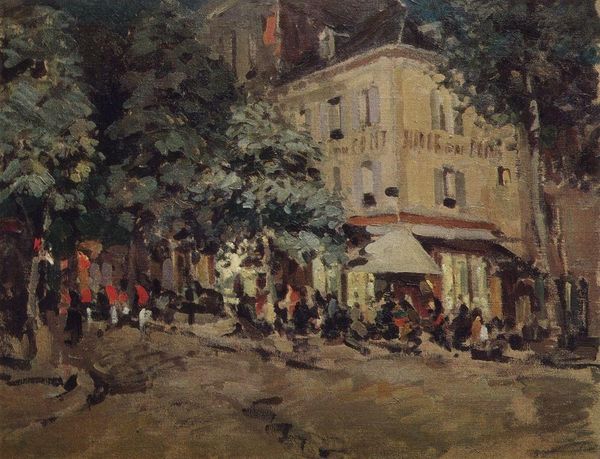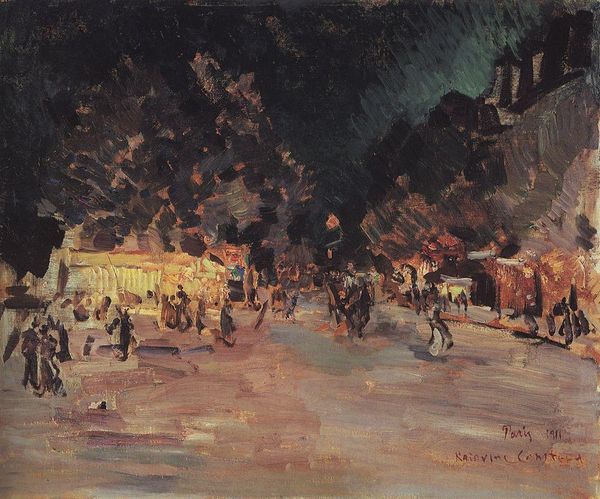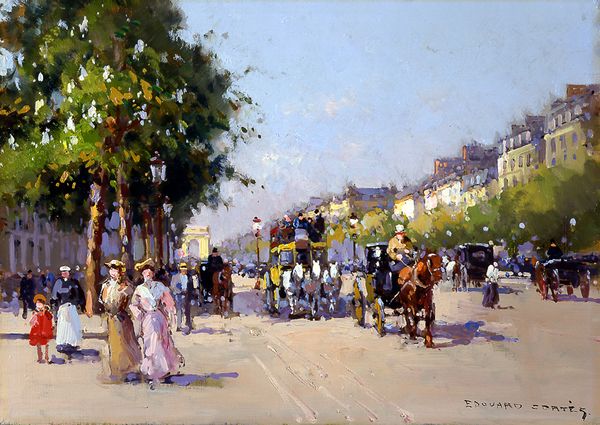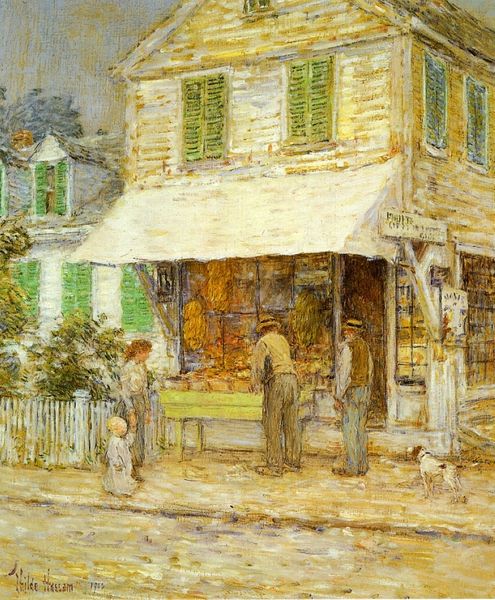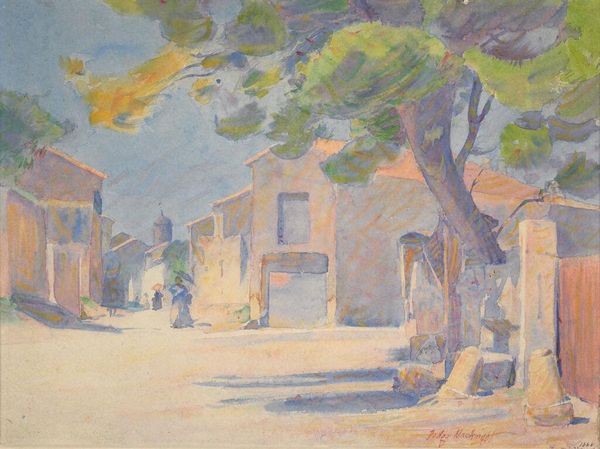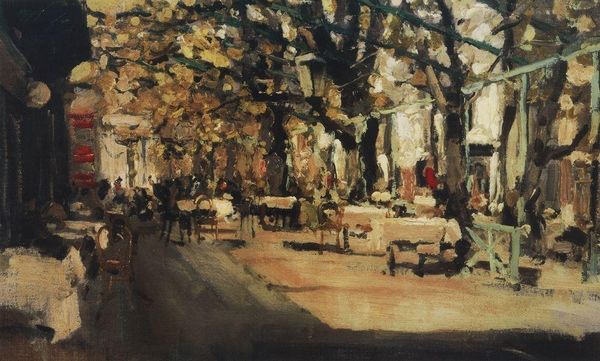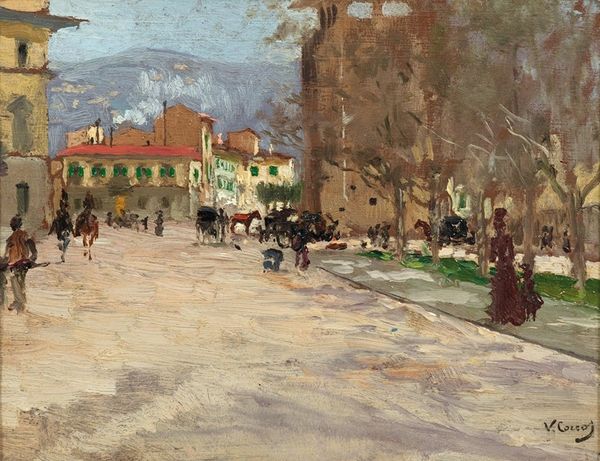
Copyright: Public domain
Editor: This is Konstantin Korovin’s "Paris in the Morning," painted in 1920 using oil on canvas. It has such a hazy, dreamlike quality. I'm immediately drawn to how the light interacts with the forms, especially the way shadows are painted on the street. What formal qualities stand out to you? Curator: Notice first the masterful use of impasto. Observe how Korovin applies thick layers of paint, particularly in the foliage and building facades, creating a tactile surface. The brushstrokes themselves become integral to the composition. What do you observe about the color palette and how does it contribute to the artwork? Editor: I see mostly muted blues, greens, and yellows. It’s interesting how he uses these colors not to replicate reality, but to suggest the feeling of a bustling Parisian morning. I'm thinking about Saussure’s signifier/signified, where the color and brushwork point more to the essence of Paris than the specific reality of its streets. Curator: Precisely. Note the composition as well. Korovin constructs a scene that isn’t focused on precise linear perspective, but uses patches of color and light to create depth. Do you see how the trees act as a screen, simultaneously obscuring and revealing elements of the cityscape? It flattens the plane and prioritizes surface. How effective do you think this flattening is for conveying his desired meaning? Editor: I think it definitely enhances the dreamlike quality. It almost feels like looking at a memory, rather than a photograph of a specific place. I never really thought about landscape having dreamlike features. Curator: Indeed. Korovin focuses on surface tension and the emotive power of color, making this less a representational piece, and more an essay on pure painterly qualities. This interplay really creates visual dynamism. Editor: I never considered the impasto creating a visual dynamism but I see that now. Thanks for sharing a new point of view. Curator: My pleasure. Paying close attention to form helps us understand what and how artworks mean.
Comments
No comments
Be the first to comment and join the conversation on the ultimate creative platform.
